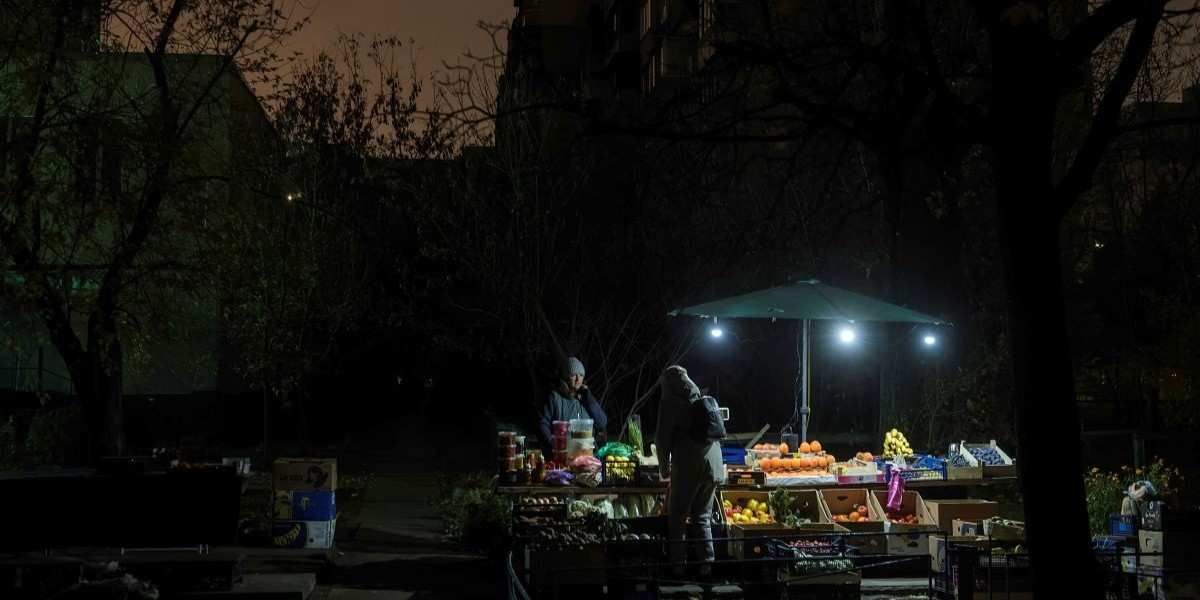As a fourth winter of war approaches, Russia is destroying Ukraine’s energy grid faster than it can be rebuilt. “We lost everything we were restoring,” Centrenergo, one of Ukraine's largest power operators, said on Facebook following a devastating weekend assault that reduced the country's energy capacity to “zero.”
Since Sunday, most of Ukraine has been plunged into intermittent darkness as the government schedules rolling blackouts to preserve what little power remains. Russian drones and missiles have pummeled power plants, substations, and gas infrastructure in a relentless campaign that has intensified as temperatures drop. Further complicating the situation, Ukrainian authorities charged senior energy officials with a $100 million kickback scheme – which has outraged the public and raised concerns that graft could ward off desperately needed energy assistance from the European Union.
“Since the start of the war, Russia’s main objective in attacking civilian energy infrastructure is to demoralize the population and inflict economic damage,” says Eurasia Group analyst Dani Podogoretskaya. The targets extend beyond power facilities to hospitals, apartment buildings, schools, and kindergartens – all aimed at breaking Ukrainian resolve.
More than three years into the conflict, the strategy appears to be working, at least on paper. Some 69% of Ukrainians now say they are ready to settle for a negotiated end to the war, up sharply from just 22% in 2022. “This is exhausting for Ukrainians,” says Eurasia Group Russia expert Alex Brideau. “They are resisting, but it is taking a toll.”
Yet, with Vladimir Putin showing no signs of coming to the negotiating table, Ukrainians are simultaneously growing more resilient and resigned, adapting their lives to sustain the war effort. Many have purchased small generators to keep the lights on.
Ukraine's military isn't surrendering to the initiative either. Though far less frequent than the strikes they endure, Ukrainian forces have landed attacks deep inside Russia, targeting its energy infrastructure to bring the war home to ordinary Russians. “[This weekend’s] strikes have reinforced the imperative of fighting and winning,” says Podogoretskaya.
A chill across Europe. Ukraine’s energy crisis won’t remain contained within its borders. As the country’s ability for power generation collapses, it must turn to European neighbors for electricity and gas imports — a shift already reverberating through EU energy markets strained since Russia’s invasion.
The pressure is showing up in prices. German baseload electricity for January 2026 delivery has climbed nearly €10 per megawatt-hour in recent weeks, now exceeding €105/MWh and up from €94/MWh in November. Ukraine’s increased demand for imported power will continue pushing regional prices upward as winter deepens.
But the longer-term consequences may prove even more significant. Russia’s systematic destruction of Ukrainian energy infrastructure has poisoned any remaining prospects for cooperation. The idea of resuming Russian gas transit to Europe through Ukrainian pipelines – once a cornerstone of the continent’s energy supply – is now politically dead.
“Any transit arrangement would be viewed as rewarding Russia's deliberate targeting of civilian infrastructure,” says Podogoretskaya. Ukrainian politicians, energy officials, and security experts are united in their opposition to serving as a conduit for Russian gas after watching their power sector and domestic production facilities reduced to rubble. This stance will shape European energy policy for years to come, cementing the EU’s pivot away from Russian energy dependence – even as the costs of that transition continue to mount.
